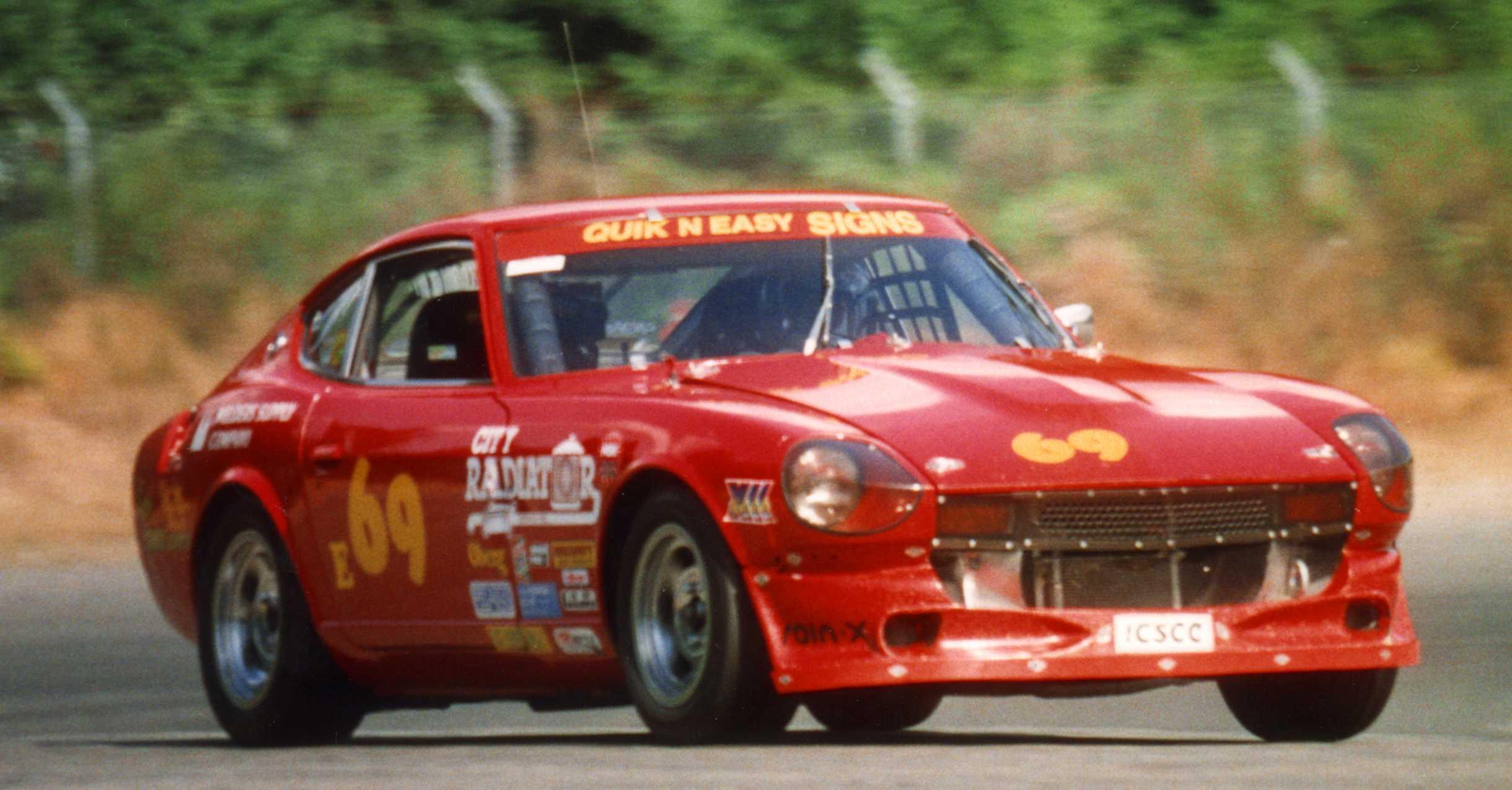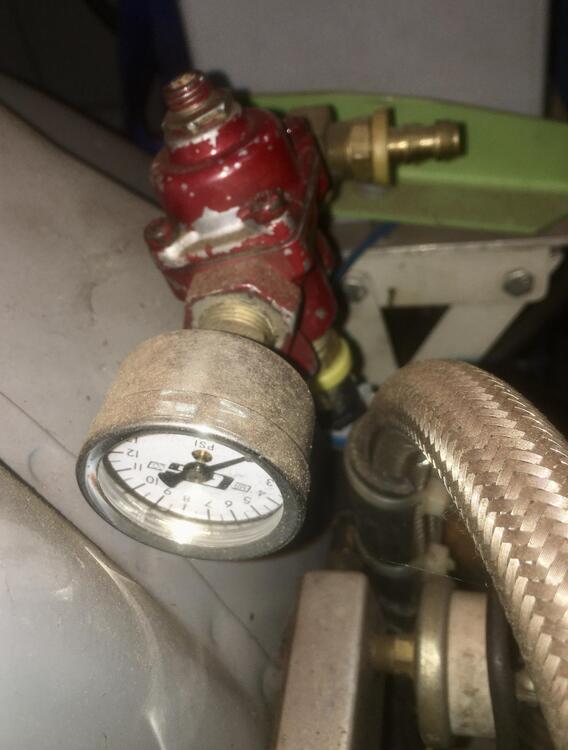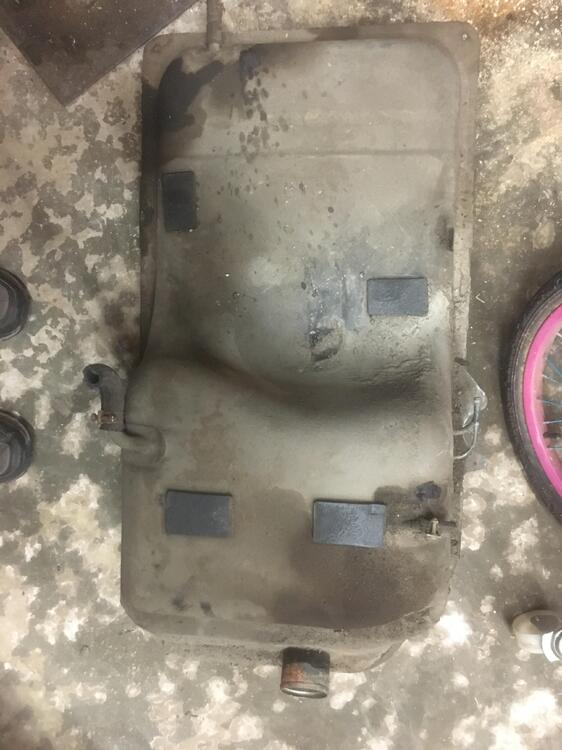
Everything posted by Racer X
-
I thought I was done with Z cars
The lift should make it much easier. Let us know how it goes!
-
Carburetor Conundrum (260Z)
Sorry, I meant to comment on this earlier. A good quality gauge and a proper fuel pressure regulator. The red Holley fuel pressure regulator works well, and has two outlets, or to go to the carbs, the other where a gauge can be connected. The SU carbs don’t require much fuel pressure, under 4psi if memory serves me. A picture of the setup on my race Z:
-
Z's on BAT and other places collection
What the hell happened to this carpet?
-
Z's on BAT and other places collection
Here we go again. Another one family, low mile 70. https://bringatrailer.com/listing/1970-datsun-240z-86/ Immediately jumped to $15,000..
-
I thought I was done with Z cars
I think another member here did it that way. Used a chain fall I think to pick the front of the car up, roll the engine and transmission, mounted on the subframe under, drop the car down. I think it would be doable, the engine, even with a exhaust header and the intake/carbs mounted, isn’t as wide as the distance between the frame rails. Some maneuvering might be needed around the compression rod pockets. Also, once the car is down around the drivetrain, the crossmember transmission mount and compression rods will be difficult to get to, even if the front suspension has the wheels and tires on it. It would be easier with a two post lift, and the subframe, engine and transmission could be set on a workbench, allowing better access to the underside bits that will need to be fastened.
-
Carburetor Conundrum (260Z)
It may be possible to repair the vacuum port that had the nail in it, with an appropriately sized brass tube. Use a tube that is slightly too big, and turn it down, then press it in. Not sure what to do about those cobbled up throttle shafts with the “inject grease here” scratched into the flanges. Perhaps the place in Oregon, Z Therapy could repair them. They have a ball bearing upgrade for the SU carb.
-
Carburetor Conundrum (260Z)
OK, I just read through the entire nail in the vacuum port saga, and would like to offer some observations. In the first post there is a video, and you have your son start the car. You direct him to pump the accelerator twice before cranking the engine. This is a common misconception carried over from engines equipped with carburetors with automatic chokes and accelerator pump circuits. Stepping on the pedal before starting does two things. First, it allows the choke plates to fall closed. Second, it squirts a bit of fuel into the intake passage. This does nothing with the SU carburetor, as it has no accelerator pump circuit and no fuel will be introduced prior to startup. Also, the SU carbs don’t have a choke plate, the “choke” lever simply opens the throttle slightly to facilitate more air and extra fuel (only added as the pistons draw air through the carbs into the engine, which also draws fuel from the float chamber through the orifice where the tapered needle is in the carb throat). I also didn’t see and mention to check for vacuum leaks (although Mark Maras did mention that excess air, not fuel, will cause high idle). Ultimately the culprit was found to be a hack job by the previous owner who did the carb conversion. My .02 cents.
-
Carburetor Conundrum (260Z)
I believe the FSM. Calls for 10wt non detergent motor oil. I use ATF, and usually only a few drops.
-
Carburetor Conundrum (260Z)
If you need to look into the throttle bores, a mirror will work. A light will make it even easier to see.
-
Carburetor Conundrum (260Z)
I would also suggest getting the FSM for an earlier Z, say the 72, to compare the setup for the earlier round top carbs.
-
hot water to manifold?
Which would promote better and more complete combustion of the air/fuel mixture, resulting in lower exhaust emissions. Once the engine is at operating temperature, the thermostatic valve closes and blocks the flow of coolant through the manifolds. At that point the engine is warm enough to more completely consume the incoming fuel.
-
hot water to manifold?
Good points. But. The passages for coolant only pass through the intake manifold, not the carburetors. The carburetors are also insulated from the intake manifolds by the phenolic spacers. So how can the coolant, which is heating a portion of the intake stream downstream of the carburetors, warm the area in the carburetors to reduce or eliminate carburetor ice? I doubt it can, as the heated incoming air/fuel mixture has already passed the carburetors. In airplanes with reciprocal engines equipped with carburetors, the intake airstream can have warm air drawn from a heat exchanger over the exhaust manifold, to warm the incoming air and prevent carburetor icing. Also, in other carbureted automotive applications, there is a duct to direct warm air from the exhaust manifold into the air cleaner housing ahead or the carburetor, to reduce carburetor icing. Indeed, even the Z has this same warm air duct directing heated air into the carburetor inlets. Heating the intake manifolds after the air/fuel mixture has been drawn through the carburetors does little, if anything, to warm up the carburetors to reduce or eliminate carburetor icing,
-
hot water to manifold?
The circulation of coolant through the intake manifold was to reduce emissions. A cool, more dense fuel/air mixture does indeed produce more power, but with more power also comes higher exhaust emissions. So warming the incoming fuel/air mixture lowers the exhaust emissions. I removed the passages and plumbing on the intake for my race Z and never have had issues with carburetor icing, so I doubt the system was originally intended to prevent the icing.
-
Z's on BAT and other places collection
$56,500. Uf da!
-
Z's on BAT and other places collection
From the ad: 1978 dstsun 280z, it was t-boned a few years back ...... Looks more like the car rear ended another, or was driven into a ditch. I think the seller is confused.
-
76 280Z Rust Issue
Yes, the replacement pieces will get welded in place. As for the difference between the 2+2 rails and pans and those for a two seater, you will need to piece together parts, or make pieces to add the extra length.
-
Most dreaded of jobs finally on the horizon ? the fuel tank !
Too bad you didn’t take a picture before so you would have a reference. For what its worth, here is a picture of the tank from my 72 240Z. The pads should be pretty close to the tank on a 280Z. I have a 280Z tank around here somewhere, when I come across it I’ll shoot a pic of it too.
-
76 280Z Rust Issue
A brake line leak didn’t cause that. Yes, the sheet metal is available. There is a company in Florida that is producing an ever growing assortment of pieces for Z cars, including frame rails and floor pans. Oh, and the rust pictured is definitely structural, not cosmetic. And the rust would concern me if I was considering buying this car.
-
Most dreaded of jobs finally on the horizon ? the fuel tank !
Huh? If I recall, the 4 speed transmissions are geared to give a reasonable engine speed in top speed on the highway. What do you mean “run out of transmission”?
-
Z's on BAT and other places collection
I’m trying to thin the herd, so not likely. Besides, Mrs. Racer would have a fit if I were to drag another car home. Let Ollie Naugle have it.
-
Windshield Polish
And hey, your windshield will have fewer cavities! 😄
-
76 280Z Rust Issue
Is that the left frame rail, under the driver’s side footwell? I see rust on the floor pan too. Looks like your Z needs frame rails and floor pans. Any “patch job” will only be a band aid, and the problem will be passed on to the next owner.
-
Windshield Polish
The polishing compounds for paint are not aggressive enough to polish glass. If they were, they would cut the paint and make it dull. The paint is much softer than glass.
-
Windshield Polish
The tint is in the glass and can’t be polished away.
-
Most dreaded of jobs finally on the horizon ? the fuel tank !
The rubber blocks act as insulators between the fuel tank and the body structure. Be sure to place them where they were originally. The stock oil pressure sending unit isn’t very accurate. Using a good quality mechanical gauge will give a better reading of oil pressure. At idle, an engine just started with cold oil will have higher oil pressure than a hot engine. The rule of thumb for oil pressure is 10 psi for every 1,000 rpm of engine speed. If a hot engine doesn’t have 10 psi at idle, the cause should be investigated.











